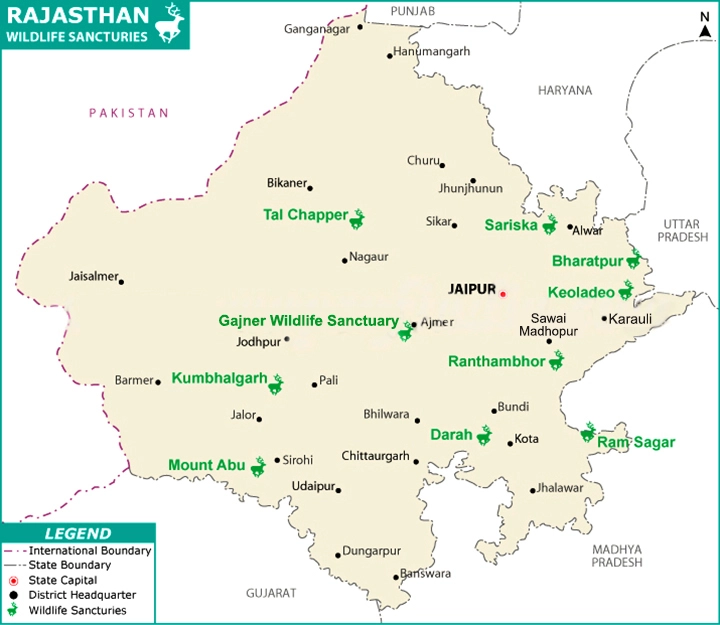Rajasthan Switch to Hindi
Jaguar Aircraft
Why in News?
During a routine training mission, a Jaguar trainer aircraft of the Indian Air Force (IAF) crashed in Rajasthan's Churu district.
Key Points
- Jaguar Aircraft:
- Background:
- Jaguar is a British-French fighter aircraft that was originally deployed in the British Royal Air Force and the French Air Force.
- The Jaguar jets were inducted into the Indian Air Force (IAF) in 1979.
- Hindustan Aeronautics Limited (HAL) started producing licensed variants in 1981 and continued till 2008.
- India has inducted over 160 Jaguars in various configurations:
- Jaguar IS (single-seat strike fighter)
- Jaguar IB (two-seat trainer)
- Jaguar IM (naval variant)
- Combat History and Global Operators:
- The Jaguar has seen active deployment in Mauritania, Chad, Iraq, Bosnia, Pakistan, and more recently, during India’s Operation Sindoor.
- It served as a nuclear delivery platform for the UK, France, and India.
- Over the years, countries such as France, the UK, Oman, Ecuador, Nigeria, and India operated the aircraft.
- Background:
- Similar IAF Crashes:
- Between November 2024 and April 2025, the IAF reported four aircraft crashes during training missions across Uttar Pradesh, Madhya Pradesh, Haryana, and Gujarat.
- Technical malfunctions led to the crashes of MiG-29, Mirage 2000, and Jaguar jets.
- Growing Concerns Over Aircraft Safety:
- The recent string of IAF crashes indicates recurring technical issues in operational aircraft.
- Many of the crashes involved older platforms like the MiG-29 and Jaguar, raising concerns over fleet modernisation and maintenance protocols.
- The IAF has launched inquiries in each case, but the frequency of such incidents points to the need for deeper systemic evaluation.
Rajasthan Switch to Hindi
Sariska Tiger Reserve (STR)
Why in News?
The Standing Committee of the National Board for Wildlife (SC-NBWL), chaired by the Union Environment Minister, has approved the proposal to redraw the boundaries of the Sariska Tiger Reserve’s (STR) Critical Tiger Habitat (CTH), with the Supreme Court's final nod awaited.
Key Points
- About the Proposal:
- The Supreme Court is suo motu examining several issues related to the STR, including the rationalisation of its boundaries. Its Central Empowered Committee (CEC) has recommended changes to address human disturbances such as village relocations and cattle grazing.
- Proposed Changes: The rationalisation will result in the CTH expanding from 881.11 sq km to 924.49 sq km, while the buffer zone will reduce from 245.72 sq km to 203.2 sq km, balancing conservation needs with developmental pressures.
- Ecological and Legal Context: CTH is protected under the Wildlife Protection Act, 1972 and must be kept free of human interference.
- The re-demarcation may benefit over 50 mining operations shut down due to proximity to Tiger habitat.
- Sariska Tiger Reserve:
- The Sariska Tiger Reserve, located in Rajasthan’s Alwar district within the Aravalli hills, was declared a wildlife sanctuary in 1955 and became a tiger reserve in 1978 under Project Tiger.
- Known for its rich history, it houses the Kankarwadi Fort, where Aurangzeb imprisoned Dara Shikoh, and the Pandupole Hanuman temple linked to the Pandavas.
- The landscape is marked by rocky terrain, grasslands, scrub-thorn forests, and semi-deciduous woodlands. Vegetation includes dhok, salar, kadaya, ber, gugal, and bamboo.
- The reserve supports diverse fauna including Royal Bengal tigers, leopards, sambhar, nilgai, wild boars, and hyenas.
- Sariska Tiger Reserve also surrounds sites like Jai Samand Lake and the Siliserh Lake.
National Board for Wildlife (NBWL)
- About: NBWL is a statutory body constituted under the Wild Life (Protection) Act, 1972 (WPA, 1972). It is the apex body on wildlife conservation and development.
- Composition: The NBWL is a 47-member committee headed by the Prime Minister, who serves as the ex-officio Chairperson, while the Minister of Environment, Forest, and Climate Change serves as the Vice-Chairperson.
- Its members include:
- Officials involved in wildlife conservation
- The Chief of Army Staff, Defence Secretary, and Expenditure Secretary.
- Ten eminent conservationists, ecologists, and environmentalists nominated by the central government.
- Its members include:
- Functions: It is mandated to promote conservation and development of wildlife and forest.
- Role in Tiger Reserves: It ensures that no tiger reserve is diverted to unsustainable use without its approval, with advice from the National Tiger Conservation Authority (NTCA).







-UPPCS-English%20(web).png)
-UPPCS-English%20(mobile).png)







.jpg)









.png)







 PCS Parikshan
PCS Parikshan


